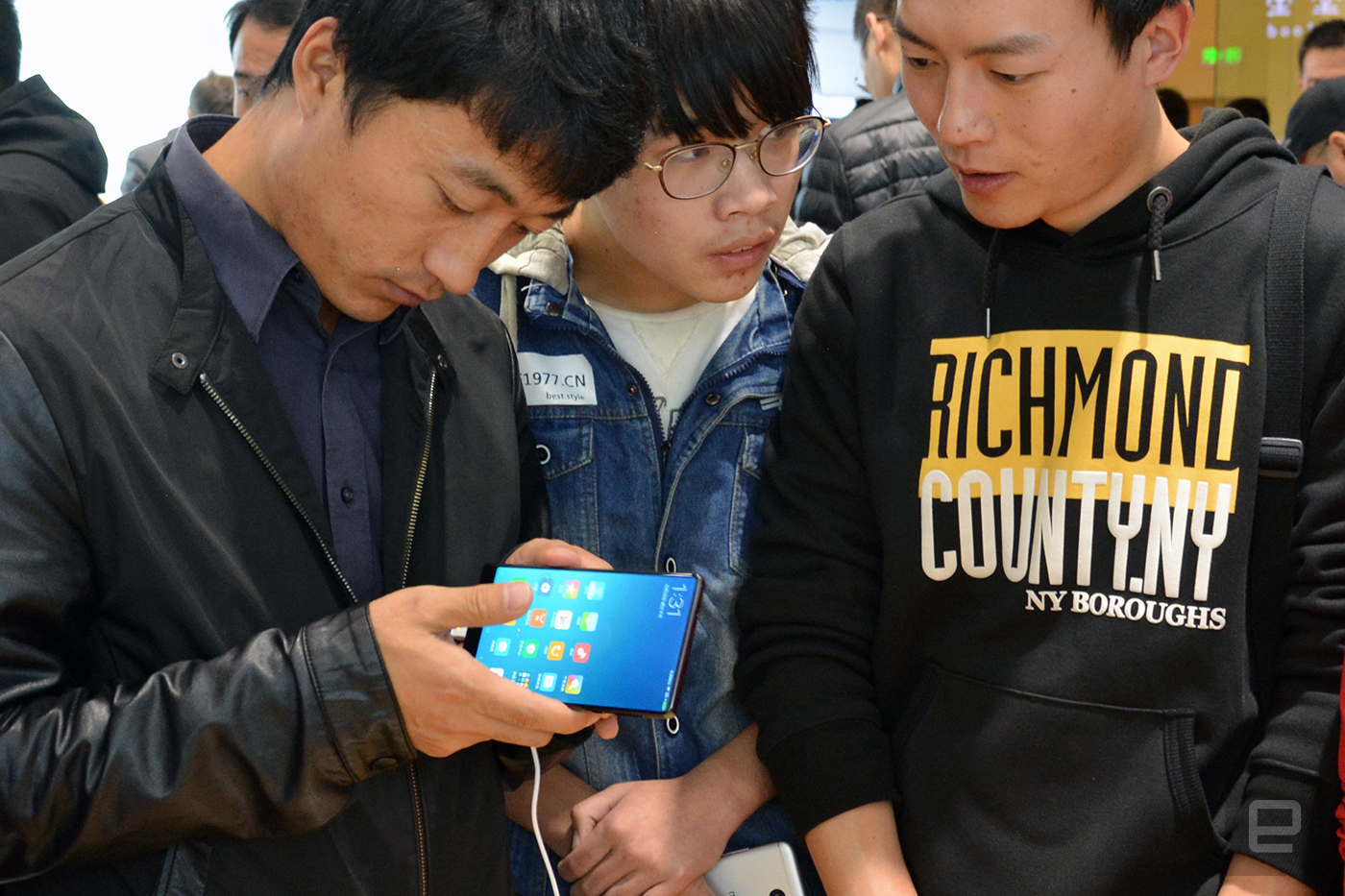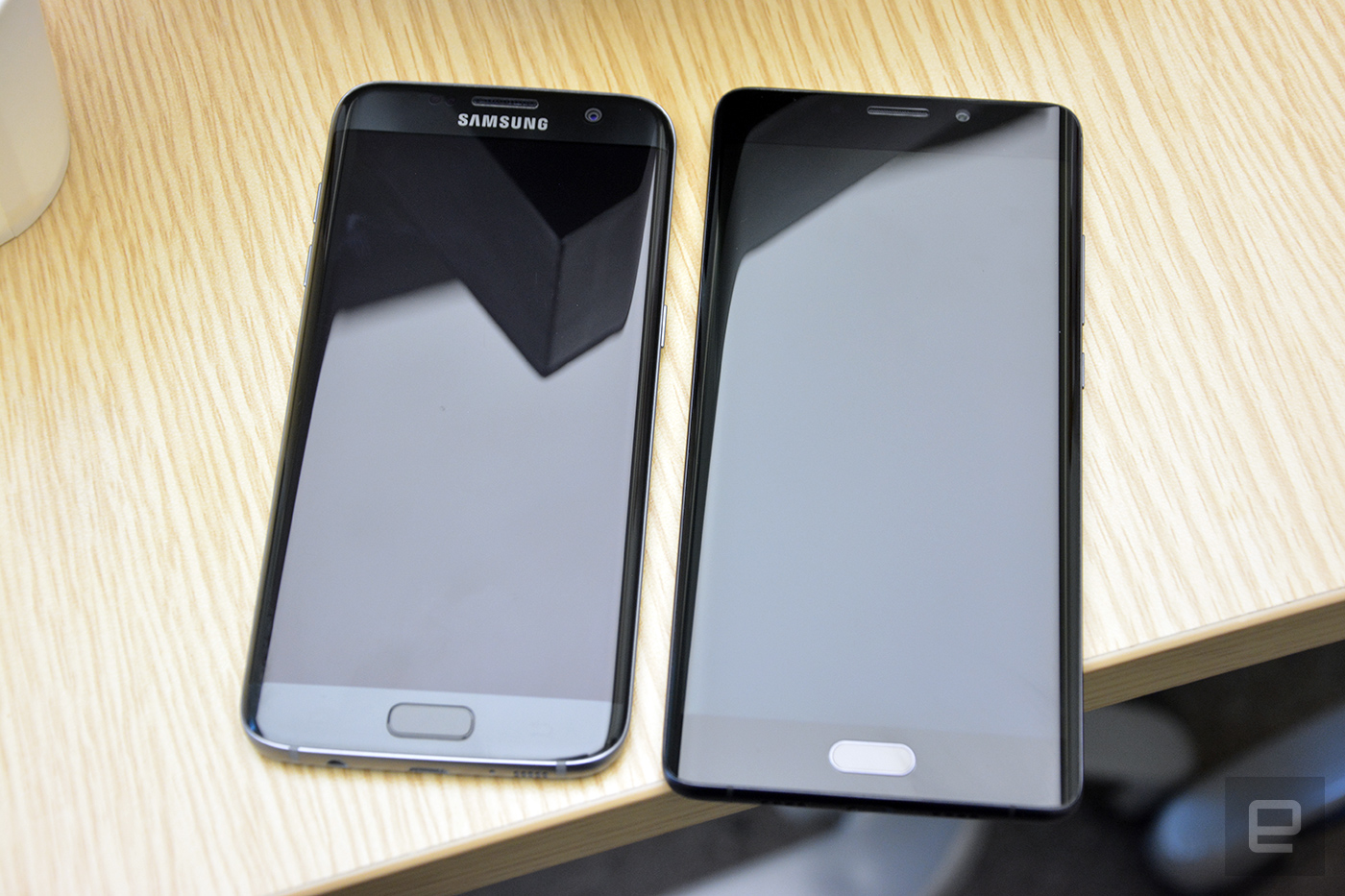The Mi MIX didn't just happen over night, of course; it was a two-year project with contributions from French designer, Philippe Starck. This man is no stranger to the tech world, he's helped design headphones, hard drives, a smart radiator valve, electric bicycles and, even, the late Steve Jobs' yacht. Barra described Starck's role in the Mi MIX project as setting high-level priorities, especially when it came to convincing the Xiaomi team to keep things clean and simple.
Xiaomi's aim with the Mi MIX is to showcase some of the breakthrough mobile technologies that will eventually trickle down to its mainstream devices. In this case, we have Sharp's near-bezel-less display which we knew was arriving sooner or later. Hidden underneath that is Elliptic Labs' ultrasound-based proximity sensor, which replaces the ugly infrared dot and turns the screen off when the phone is placed next to your ear. Last but not least, the full ceramic body is a nice alternative to the aluminum we're accustomed to. The company hopes these experiments will lead consumers to see Xiaomi as home to serious innovation, rather than a budget brand.

Some would argue that it should be giants like Apple and Google bringing out devices like the Mi MIX. While Barra declined to comment on the iPhone 7, he was happy to praise his previous company's efforts with the Pixel and even went as far as saying the series "sets a bar for the whole world." He described Google's latest phones as being "all-around optimized," "very responsive" with "great battery life" plus an "awesome camera," though he did say that they don't necessarily have the best industrial design -- especially with their "very tall chins."
Could Google have done a phone like the Mi MIX? Barra defended his former colleagues by saying it would have been difficult for them to justify the risk of delivering a phone like this, as it wouldn't sell in large quantities. The Pixel, on the other hand, doesn't have this problem. "I think they're gonna sell a lot of Pixels. Every Android enthusiast is going to try what they can to get their hands on one." Sometimes I can't help but wonder if Barra is still working for Google.
Save for the Mi Home's strong resemblance to any Apple store, the Mi MIX could have almost peeled the copycat label off Xiaomi for good. Alas, people were quick to compare the Mi Note 2's 3D curved body to Samsung's S7 Edge and its discontinued Note 7. Barra was keen to point out that Xiaomi was actually the first company to release a smartphone with a 3D curved glass back -- the original Mi Note. The same industrial design was applied to the smaller but more powerful Mi 5.

"I'm not worried about what people are going to say."
Samsung then combined the 3D curved screen and the 3D curved glass back for the S7 Edge, to which Barra said, "Well, no one is going to give us credit for a curved back, right? They just care about the front." It wasn't until the Mi Note 2 when Xiaomi followed Samsung's suit, courtesy of the flexible OLED display allegedly supplied by LG.
"In how many ways do you think you can design a curved display? Exactly one way," Barra argued. "I don't think that anyone can outright claim ownership of that as an invention because it's kind of like a logical thing. They can claim that they were the first ones to do it, but certainly not the ones responsible for the most incredible idea in the world because it's just a very straightforward engineering thing: As soon as you can come up with a flexible OLED display, you can design a screen like this.
"I'm not worried about what people are going to say, because we're pretty confident in our design capability. I think [the Mi MIX unveiling] was a pretty clear demonstration of that."
Source: Xiaomi aims to be more than king of the budget smartphones
Comments
Post a Comment